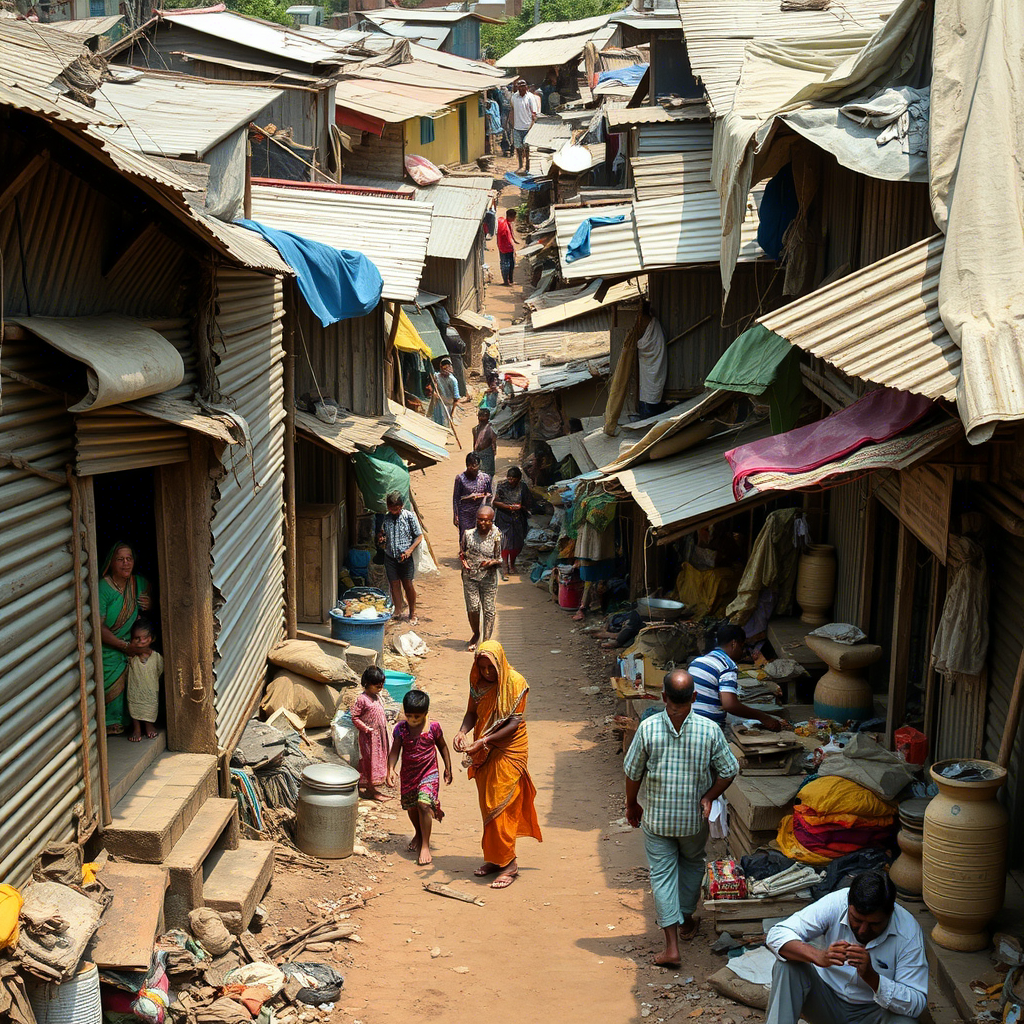Smart Dharavi City: a city on many grounds
Introduction
Dharavi, often labeled as a “slum” or “marginal settlement,” has long been misunderstood in urban planning discourse. Traditional narratives surrounding this vibrant neighborhood tend to focus on its lack of infrastructure and perceived inadequacies as a habitat option. However, beneath the surface lies a thriving ecosystem that challenges conventional notions of urban living. The concept of Smart Dharavi City emerges as a reimagining of this unique urban space, highlighting its strengths rather than its shortcomings. By embracing its organic development, decentralized economy, and community-centric values, Dharavi offers lessons for cities worldwide striving to become smarter and more sustainable. This article explores how Dharavi’s innovative urban model can inspire planners and policymakers to rethink what makes a city truly “smart.”

Section 1: Rethinking Urban Narratives Around Dharavi
From Negative Perceptions to Positive Realities
When reviewing existing literature about Dharavi, it is common to encounter terms like “shanties,” “poor slums,” and “marginal settlements.” These descriptors are often used to disqualify Dharavi as a viable habitat option, painting it as an area devoid of proper infrastructure. However, such characterizations fail to capture the essence of life in Dharavi. The quality of life here cannot be measured solely through objective metrics; instead, it must account for subjective perceptions shaped by environment, society, culture, and value systems. For many residents, Dharavi represents a way of life that fosters immense capabilities and satisfaction.
The Smart Dharavi City narrative seeks to shift this perspective by emphasizing the positive aspects of Dharavi’s urban fabric. Rather than viewing it as a problem to solve, we should recognize it as a solution in itself—a dynamic example of grassroots urbanism. Its close-knit communities, self-sustaining economies, and adaptability to local needs make it a beacon of resilience. By reframing Dharavi within the context of smart cities, we acknowledge its potential to contribute meaningfully to global conversations about sustainable urbanization.
Section 2: Decentralized Economy and Home-Based Productivity
A Unique Work-Place Relationship
One of the defining features of Smart Dharavi City is its integration of work and living spaces. Unlike formalized urban areas where residential zones are strictly separated from commercial ones, nearly every home in Dharavi doubles as a workplace. This arrangement supports a decentralized, human-scale, labor-intensive economy that thrives on low-tech yet highly efficient processes. Industries ranging from leather goods to pottery and textiles operate out of small workshops embedded within the community.
This symbiotic relationship between habitation and productivity creates an organic urban form that prioritizes people over vehicles. Streetscapes in Dharavi are pedestrian-friendly, fostering social interactions and strengthening community bonds. Moreover, the mixed-use nature of these streets ensures high density without compromising livability—a hallmark of successful urban design.
Planners around the world have attempted to replicate this model, but few have succeeded in capturing its authenticity. A simplistic approach of rezoning and segregating activities—common in Western cities like those in the United States—would disrupt the delicate balance that defines Dharavi’s urban structure. Instead, preserving and enhancing this home-work relationship is crucial for maintaining the vitality of Smart Dharavi City .
Section 3: Community-Centric Urbanism
Lessons in Social Cohesion and Urban Integration
At the heart of Smart Dharavi City lies its emphasis on community-centric urbanism. Unlike planned cities designed with rigid zoning laws, Dharavi evolves incrementally, responding organically to the needs of its inhabitants. This flexibility allows for a network-based system where functions and people coexist harmoniously. Every street corner becomes a hub of activity, connecting neighbours and fostering a sense of belonging.
Social connections in Dharavi extend beyond mere convenience—they represent a deep-rooted commitment to collective well-being. Residents actively participate in shaping their environment, creating shared spaces that serve multiple purposes. Whether it’s a courtyard doubling as a marketplace or a narrow alleyway transforming into a playground, these adaptive uses reflect the ingenuity of Dharavi’s urbanism.
Prakash M. Apte’s insights underscore the importance of integrating functions and people in urban planning. In Dharavi, urban elements function not as isolated puzzle pieces but as interconnected parts of a living organism. This holistic approach serves as a blueprint for designing inclusive, resilient cities that prioritize human experience over architectural aesthetics.
Section 4: Preserving Dharavi’s Legacy in Future Urban Planning
Toward a Smarter, More Sustainable Future
As cities grapple with challenges like overcrowding, pollution, and resource scarcity, the principles embodied by Smart Dharavi City offer valuable lessons. Its decentralized economy, pedestrian-friendly streetscapes, and strong social cohesion provide a roadmap for achieving sustainability at scale. Policymakers and planners must resist the temptation to impose top-down solutions that risk erasing Dharavi’s unique identity. Instead, they should adopt participatory approaches that empower residents to shape their own futures.
Investing in technology while respecting traditional practices could further enhance Dharavi’s smart credentials. For instance, introducing renewable energy sources, digital connectivity, and waste management systems tailored to local needs could amplify its existing strengths. Such initiatives would ensure that Dharavi remains a leader in grassroots innovation while addressing modern urban challenges.
Ultimately, Smart Dharavi City stands as a testament to the power of bottom-up urbanism. By celebrating its achievements and learning from its successes, we can build smarter, more equitable cities for generations to come.
In conclusion, Smart Dharavi City redefines what it means to be a smart city. It proves that intelligence in urban planning doesn’t always stem from cutting-edge technology or grandiose designs—it can also emerge from the wisdom of communities working together to create vibrant, sustainable environments. By embracing Dharavi’s legacy, we pave the way for a brighter future in urban development.
